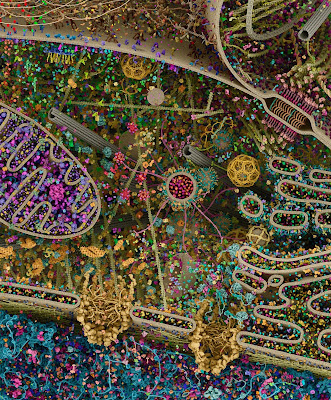Sodium Valproate Improves Sensorimotor Gating Deficit Induced by Sleep-Deprivation in Low Doses
Muhammet Tekin, Fatma Duygu Kaya Yertutanol, Burcu Çevreli, Asil Ali Özdoğru, Hamza Kulaksız, and İsmail Tayfun Uzbay
 Background/aim: Sleep-deprivation disrupts prepulse inhibition of acoustic startle reflex and can be used to mimic psychosis in experimental animals. On the other hand, it is also a model for other disorders of sensory processing including migraine. The aim of this study is to assess the effects of sodium valproate, a drug that is used in a variety of neuropsychiatric disorders, on normal and disrupted sensorimotor gating in rats. Materials and methods: 62 Wistar Albino rats were randomly distributed into 8 groups. Subchronic and intraperitoneal sodium valproate were administrated to the sleep-deprived and non-sleep-deprived rats by either in 50-100 or 200 mg/kg/day. Prepulse inhibition test and locomotor activity test were performed. Sleep-deprivation induced by the modified multiple platform method. Results: Sleep-deprivation impaired prepulse inhibition, decreased startle amplitude and increased locomotor activity. Sodium valproate did not significantly alter prepulse inhibition and locomotor activity in non-sleep-deprived and sleep-deprived groups. On the other hand, all doses decreased locomotor activity in drug treated groups, and low dose improved sensorimotor gating and startle amplitude after sleep-deprivation. Conclusion: Low dose sodium valproate improves sleep-deprivation-disrupted sensorimotor gating, and this finding may rationalize the use of sodium valproate in psychotic states and other disorders of sensory processing. Dose-dependent effects of sodium valproate on sensorimotor gating should be investigated in detail.
Background/aim: Sleep-deprivation disrupts prepulse inhibition of acoustic startle reflex and can be used to mimic psychosis in experimental animals. On the other hand, it is also a model for other disorders of sensory processing including migraine. The aim of this study is to assess the effects of sodium valproate, a drug that is used in a variety of neuropsychiatric disorders, on normal and disrupted sensorimotor gating in rats. Materials and methods: 62 Wistar Albino rats were randomly distributed into 8 groups. Subchronic and intraperitoneal sodium valproate were administrated to the sleep-deprived and non-sleep-deprived rats by either in 50-100 or 200 mg/kg/day. Prepulse inhibition test and locomotor activity test were performed. Sleep-deprivation induced by the modified multiple platform method. Results: Sleep-deprivation impaired prepulse inhibition, decreased startle amplitude and increased locomotor activity. Sodium valproate did not significantly alter prepulse inhibition and locomotor activity in non-sleep-deprived and sleep-deprived groups. On the other hand, all doses decreased locomotor activity in drug treated groups, and low dose improved sensorimotor gating and startle amplitude after sleep-deprivation. Conclusion: Low dose sodium valproate improves sleep-deprivation-disrupted sensorimotor gating, and this finding may rationalize the use of sodium valproate in psychotic states and other disorders of sensory processing. Dose-dependent effects of sodium valproate on sensorimotor gating should be investigated in detail.
Muhammet Tekin, Fatma Duygu Kaya Yertutanol, Burcu Çevreli, Asil Ali Özdoğru, Hamza Kulaksız, and İsmail Tayfun Uzbay
 Background/aim: Sleep-deprivation disrupts prepulse inhibition of acoustic startle reflex and can be used to mimic psychosis in experimental animals. On the other hand, it is also a model for other disorders of sensory processing including migraine. The aim of this study is to assess the effects of sodium valproate, a drug that is used in a variety of neuropsychiatric disorders, on normal and disrupted sensorimotor gating in rats. Materials and methods: 62 Wistar Albino rats were randomly distributed into 8 groups. Subchronic and intraperitoneal sodium valproate were administrated to the sleep-deprived and non-sleep-deprived rats by either in 50-100 or 200 mg/kg/day. Prepulse inhibition test and locomotor activity test were performed. Sleep-deprivation induced by the modified multiple platform method. Results: Sleep-deprivation impaired prepulse inhibition, decreased startle amplitude and increased locomotor activity. Sodium valproate did not significantly alter prepulse inhibition and locomotor activity in non-sleep-deprived and sleep-deprived groups. On the other hand, all doses decreased locomotor activity in drug treated groups, and low dose improved sensorimotor gating and startle amplitude after sleep-deprivation. Conclusion: Low dose sodium valproate improves sleep-deprivation-disrupted sensorimotor gating, and this finding may rationalize the use of sodium valproate in psychotic states and other disorders of sensory processing. Dose-dependent effects of sodium valproate on sensorimotor gating should be investigated in detail.
Background/aim: Sleep-deprivation disrupts prepulse inhibition of acoustic startle reflex and can be used to mimic psychosis in experimental animals. On the other hand, it is also a model for other disorders of sensory processing including migraine. The aim of this study is to assess the effects of sodium valproate, a drug that is used in a variety of neuropsychiatric disorders, on normal and disrupted sensorimotor gating in rats. Materials and methods: 62 Wistar Albino rats were randomly distributed into 8 groups. Subchronic and intraperitoneal sodium valproate were administrated to the sleep-deprived and non-sleep-deprived rats by either in 50-100 or 200 mg/kg/day. Prepulse inhibition test and locomotor activity test were performed. Sleep-deprivation induced by the modified multiple platform method. Results: Sleep-deprivation impaired prepulse inhibition, decreased startle amplitude and increased locomotor activity. Sodium valproate did not significantly alter prepulse inhibition and locomotor activity in non-sleep-deprived and sleep-deprived groups. On the other hand, all doses decreased locomotor activity in drug treated groups, and low dose improved sensorimotor gating and startle amplitude after sleep-deprivation. Conclusion: Low dose sodium valproate improves sleep-deprivation-disrupted sensorimotor gating, and this finding may rationalize the use of sodium valproate in psychotic states and other disorders of sensory processing. Dose-dependent effects of sodium valproate on sensorimotor gating should be investigated in detail.Keywords: Sleep deprivation; prepulse inhibition; psychosis; rat; sensorimotor gating; sodium valproate.
Citation: Tekin, M., Kaya Yertutanol, F. D., Çevreli, B., Özdoğru, A. A., Kulaksız, H., & Uzbay, İ. T. (2021). Sodium valproate improves sensorimotor gating deficit induced by sleep-deprivation in low doses. Turkish Journal of Medical Sciences, 51, 1521-1530. https://doi.org/10.3906/sag-2011-229



